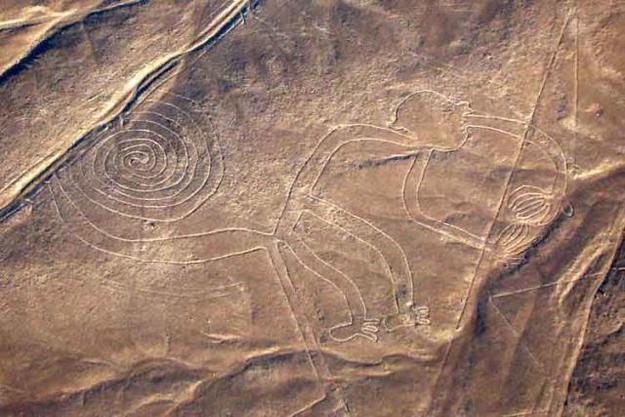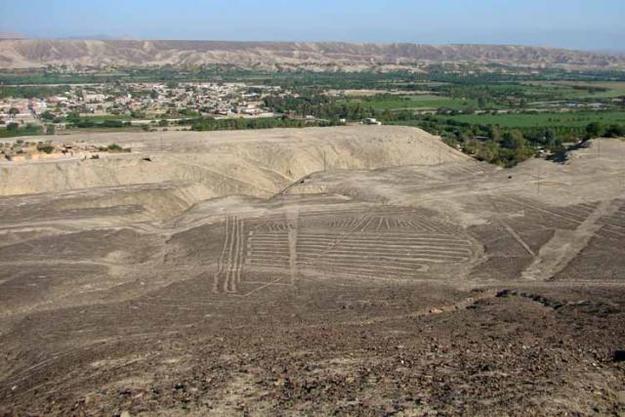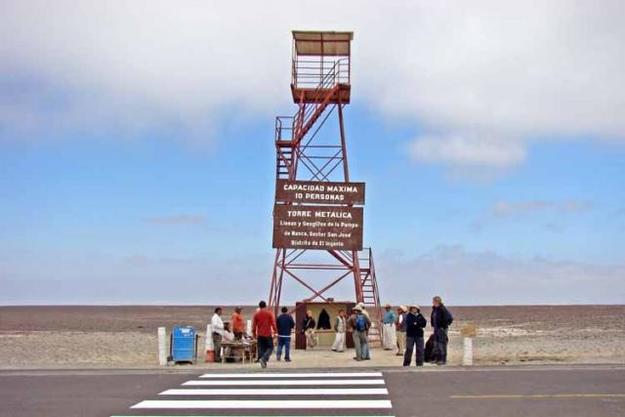Lines and Geoglyphs of Nasca
2012 World Monuments Watch
In the arid coastal plain south of Lima, Peru, figures etched in the earth thousands of years ago, and visible only from high above, capture the curiosity of the world. The geoglyphs of Nasca and the pampas of Jumana, known informally as the Nasca Lines, date from 500 B.C. to 500 A.D. Covering an area of more than 175 square miles (450 square kilometers) along low foothills and desert, these pre-Columbian archaeological wonders were created by removing the dark sand and iron-oxide-coated gravel surface to reveal the pale ground underneath. The vast figural representations, which include creatures, plants, and geometric designs, are attributed to three distinct phases of development that correspond to the Chavín, Paracas, and Nasca cultures of the region. They are believed to have had ritual astronomical functions.
Declared a UNESCO World Heritage Site in 1994, the lines and geoglyphs of Nasca have since become an important tourist destination in Peru. Conservation challenges, including tourism management and the potential for flooding from El Niño, have necessitated the development of a master plan to ensure the long-term preservation and stewardship of the site. The lines and geoglyphs were included on the 2012 World Monuments Watch in order to encourage implementation of the plan through institutional collaboration and community engagement, which will be a next critical step to ensure that these enigmas of the past continue to fascinate generations to come.
Watch Day
Watch Day was celebrated at Nasca and the nearby city of Palpa in August 2012 with traditional dance performances, photo exhibits, and public conferences. Schoolchildren from each town also participated in a drawing contest, interpreting the majestic landscape of the lines and geoglyphs.
Since the Watch
Since the announcement of the 2012 Watch, the lines and geoglyphs of Nasca have faced many threats including groups of illegal squatters, mining and drilling in the surrounding area, and trespassing. In 2012 and 2013, the site was damaged by the Dakar Rally, an international off-road race on its way through Peru. Fortunately, the event was banned from the country beginning in 2014. In December 2014, Greenpeace activists spurred controversy by laying out a message near the figure of the hummingbird, one of Nasca’s most recognizable figures. Peru’s Ministry of Culture charged Greenpeace for damages to the site. Despite these threats, many positive developments have taken place at Nasca, including the completion of a site management plan in April 2012. In August 2015, the U.S. Ambassadors Fund for Cultural Preservation committed $150,000 to an awareness campaign for the site and the demarcation of the lines, and in November 2015 the Peruvian government allocated US$2.6 million to the protection of the monument from El Niño. Meanwhile, new geoglyphs were discovered in August 2014, July 2015, and in the spring of 2016.



